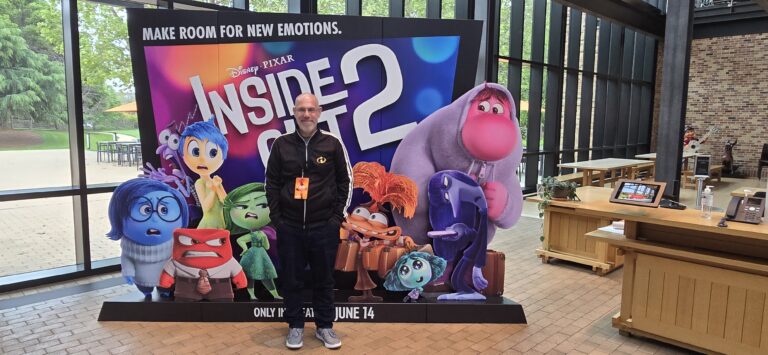
It has been twelve years since the first time I walked through the gate towered over by a name stuck in the collective imagination: Pixar. On that first occasion, I was invited to the international press presentation of Brave, a feature film that to this day remains one of my favorites among those they produced. Since 2012, I have returned there seven more times, in some cases thanks to such memorable productions as Inside Out and The Incredibles 2. My most recent visit to Pixar was at the end of April, when together with other colleagues from around the world I was invited to the preview of Inside Out 2, a sequel to the animated feature film that many (and not wrongly) consider the best made by Pixar Animation Studios.
If the sense of wonder, trepidation, and surprise are now emotions relegated to past visits, what remains intact is the feeling of entering a special place, which possesses its own specific aura, capable of keeping out everything that happens outside that gate. Pixar continues to be a place where one feels welcome, where one can spend a day working productively but also relaxing in the true sense of the word. To come back then after five years, after experiencing the many problems and uncertainties that the pandemic has created to the role of journalist/film critic, and to find the same human warmth and professional competence again, was something that humanly can give you a little bit of extra confidence that you need from time to time. Confidence in others as much as, after all, even a little in yourself.

The so-called “Country Day” dedicated to an upcoming film is organized by Pixar publicists according to a schedule that has remained unchanged over the years: the shuttle that picks up the foreign press usually housed in a hotel in San Francisco arrives at the Studios around eight o’clock in the morning. From the parking lot, it travels down a short tree-lined driveway to the main forecourt, where giant reproductions of the legendary lamp and ball, symbols of the company, greet visitors.
To their right is the Steve Jobs Building, the main building of the complex completed in 2000, where guests are seated as they wait to begin their workday. Jobs himself personally designed it: the huge central aisle was conceived as a meeting place, a common space where employees are stimulated to share ideas and personal expressions. On the two floors built on the sides, on the other hand, are the actual offices, where the films come to life: on one side work the so-called “creatives” divided into teams assigned to the various films being produced, and on the other, the technicians predisposed to the many aspects of production.
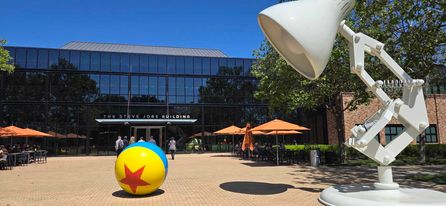
After the usual, hearty breakfast that the group of guests can enjoy in the large meeting room on the right side of the building, we usually move to the projection room located in the adjacent building, renamed Brooklyn. Here is the screening room where, in the case of Inside Out 2, director Kelsey Mann and producer Mark Nielsen presented the first thirty-five minutes of the film. Introducing them was today’s Pixar chief creative officer and director of the first Inside Out Pete Docter: “Over the years we’ve built huge universes like the ocean of Nemo and Dory, or the deep space of Wall-E.
But none of them compare to the size of the mind of a young 12-year-old girl. We knew after the first film that we had left many other possibilities aside, that there was still so much to explore about Riley. Inside Out 2 represents a little big attempt in that direction.” “When I decided to digitize my childhood photos,” Mann says, “I noticed that as the years went by, the ones related to my birthday saw me smiling less and less. The emotions that take over as you grow up make you all too self-conscious; you begin to see only your flaws. This is an age that should be appreciated and celebrated, and that’s what we wanted to do with Inside Out 2.
Teenagers should look in the mirror and love what they see, both inside and out.” Instead, the producer recalled the cast of actors who lent their voices to the various characters, from Amy Poehler (Joy) to Tony Hale (Fear), from Adèle Exarchopoulos (Ennui) to Maya Hawke (Anxiety) to Ayo Edebiri (Envy). And it was precisely in one of the building’s dubbing rooms that we spent the rest of the morning: in fact, journalists were allowed the “divertissement” of lending their voices to Joy in one of the film’s key scenes, precisely the one in which the group of protagonists discovers the arrival on the scene of other and powerful emotions, first and foremost that of anxiety.

As usual, my lunch break is spent almost entirely in the Pixar Store, where one can find items that are not usually put on sale elsewhere. It is in this little store full of wonders that my credit card finds its moment of glory, but at least this time I can say that I did not spend (only) for my personal pleasure. The new aspect of this latest visit to Pixar is the new role I arrived with, namely that of a father.
My daughter is not yet four years old, we do not allow her to watch movies, we let her sit in front of the TV for sporadic occasions and no more than ten or fifteen minutes at most. This does not mean, of course, that I am not trembling at the idea of introducing her to Pixar’s masterpieces. Some of the characters are already quite familiar to her, especially the rebel princess Merida and the emotions of Inside Out.
Whenever I can, I tell her about figures dear to me such as the super busy robot from Wall-E, the superhero family from The Incredibles, or an old man who can fly inside his little house hanging from hundreds of colorful balloons. After careful evaluations regarding sizes, favorite colors, and everything else that pertains to a child of that age, the choice fell on a baseball cap with a pink Pixar logo, a Sulley stuffed animal, a Brave jigsaw puzzle, and most importantly Inside Out 2 T-shirts for the whole family, to once again claim our (my) nerd pride…
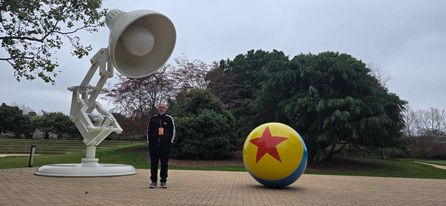
The afternoon is set up entirely for interviews: members of the international press take turns chatting with some of Inside Out 2’s art directors. The first one I was able to talk to about the film was cinematographer Adam Habib, who already held that role for the previous Onward in 2020: “For this film the biggest challenge was that we had to create two different worlds, the real one where Riley lives and the ideal one inside his head.
We chose to portray the former by building up the small imperfections of real life by working both on slightly dirtier, faster camera movements and photography with more opaque, soft lighting. In contrast, the world of Joy and other emotions is sharp, stylized, and full of bright colors and color contrasts. And the camera movements here are soft, those of a classic Hollywood comedy.
When, for example, in the mind of the protagonist Anxiety is in charge, in the real world we have employed something very much like a hand-held camera. The same goes for the focus: in the scenes where Riley is under the most stress, everything around her becomes blurred, as if to emphasize how extreme the world can often seem at that age. Our concept is that while we work entirely on computer creation, our cameras and lenses work entirely like those in real feature films.”
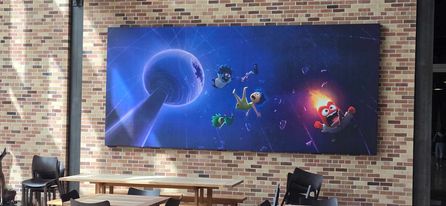
The second interview of the afternoon was with production designer Jason Deamer, who specializes in characterizing characters – Brave, Luca, and Toy Story 4 are some of the Pixar films for which he has served in that role. “Pete Docter, who directed the first Inside Out as everyone knows, created the characters from the idea of shaping the various colors, a concept as simple as it is extraordinary in the rendering of the five lead characters.
The idea was to create figures closer to the human form when the emotions were more tangible and positive, such as Joy of course, while moving closer to geometry and stylization with emotions such as Anger or Fear. With the new characters, I stuck to the same principle but pushed it a bit more toward the extremes: Anxiety for example is reminiscent of the shape of lightning, as electricity always relates to the idea of stress or anxiety. Another key aspect of creating the various characters was the levels of brightness they had to give off depending on the situation. The rendering work basically consists in producing various layers, various levels of light for each figure in the scene, especially Joy has several in the moments when she is in charge of the situation.”
After the interviews, the day at Pixar always closes with some time to relax, enjoy perhaps another handcrafted coffee inside the building, chat with colleagues and publicists, receive the usual gift bag with various gadgets from the film to which one has been invited, and finally get into the car that took me back to the San Francisco airport for the “red eye” bound for New York. As written, the day spent at Pixar is always organized through the same program. And each time it gives the same, incomparable joy.
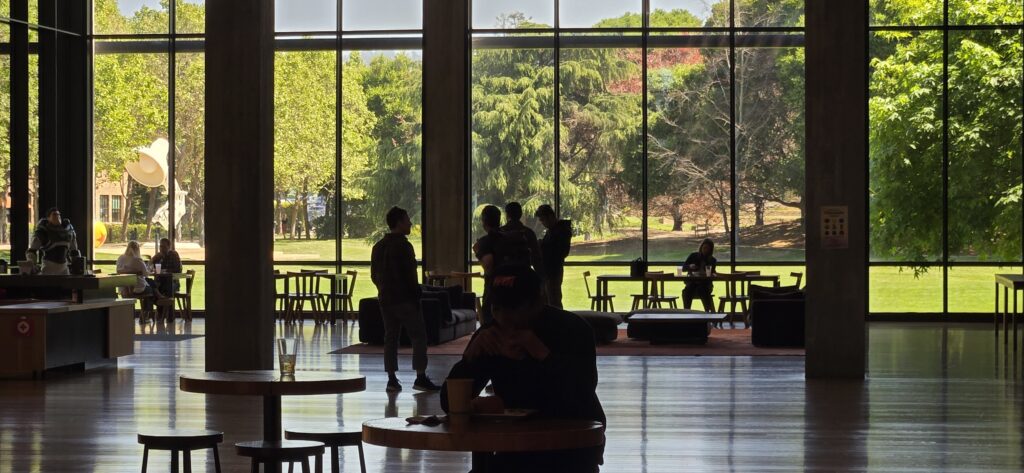
If you like the article, share your thoughts below!
Check out more of Adriano’s articles.
Here’s the trailer of “Inside Out 2.”

